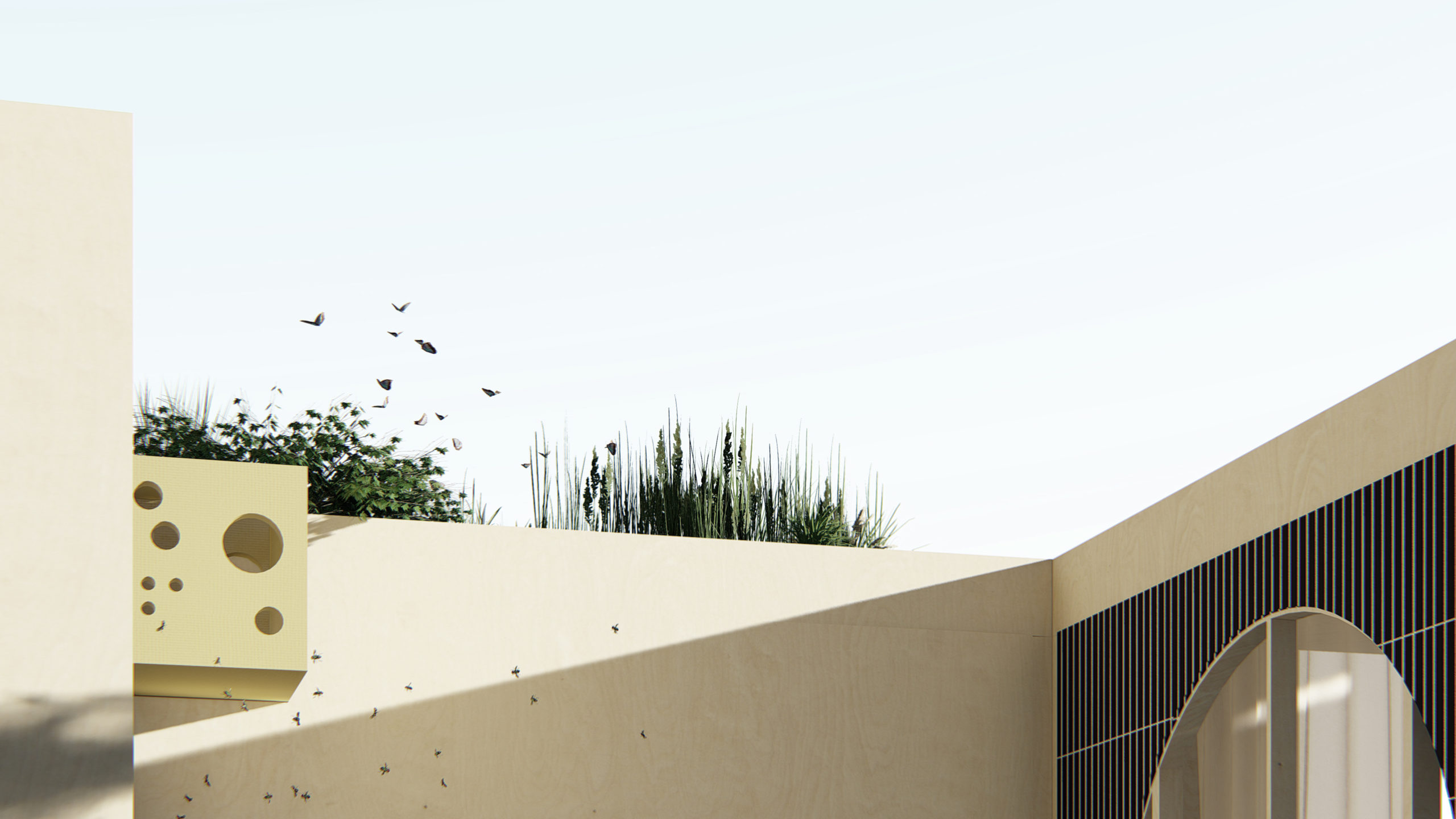
“Bio-Digital Path” is a computational model of modular public spaces generated from emerging public movements within the existing urban fabric of Barcelona. Global challenges consist of both environmental threats, but also social challenges and this project suggests that planners and architects actually have the tools to construct the public space not as a separate but as an interconnected system with its context.

The system of modular spaces is designed as an extension of the sidewalk, spanning from Arc de Triomphe to Ciutadella Park, accommodating both human and non-human users. The project’s main focus is to address the challenges posed by air and noise pollution, mental health and loneliness as well as homelessness.
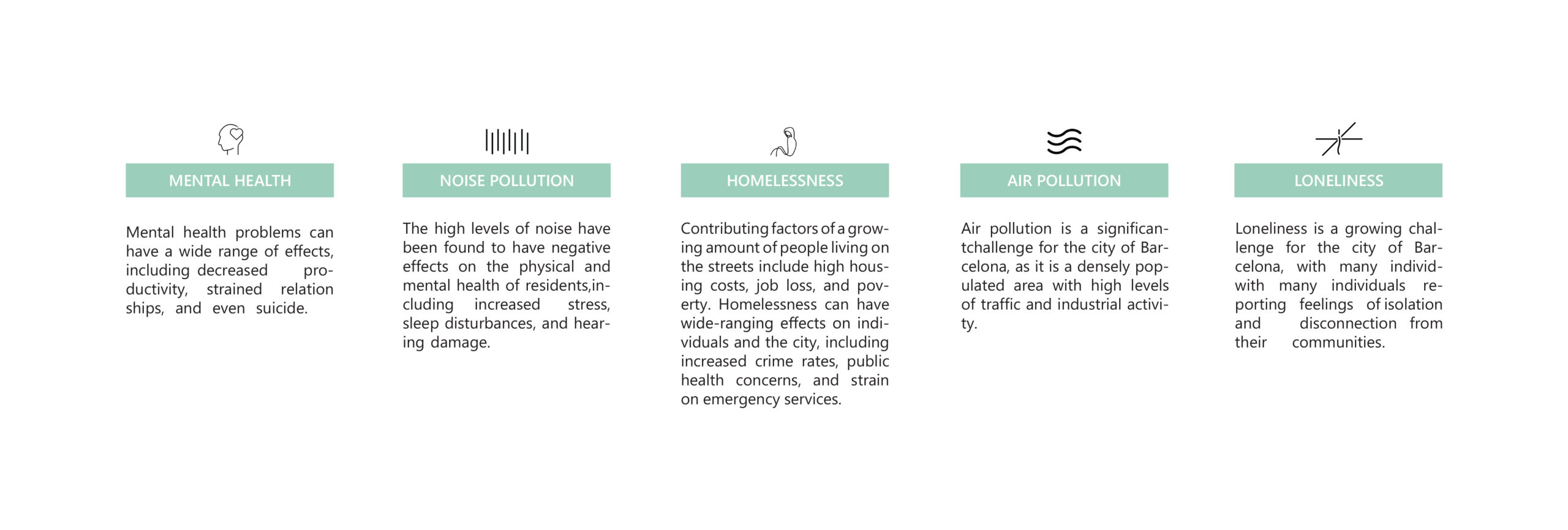
- Air and Noise Pollution: Air and noise pollution have been identified as significant threats to public health and well-being. The proposed public space system intends to mitigate these issues by incorporating green spaces and natural ventilation systems that reduce air pollution and noise levels.
- Mental Health & Loneliness : Mental health and loneliness are also growing concerns in urban environments. “Bio-Digital Path” aims to provide a supportive public space that fosters community engagement and social interaction, promoting positive mental health and well-being.
- Homelessness: Finally, homelessness is a complex issue that requires multifaceted solutions. The project acknowledges the importance of providing safe, accessible, and inclusive public spaces that can serve as a temporary refuge for homeless individuals. These spaces can offer essential amenities such as restrooms, drinking fountains, and seating areas, providing basic necessities to those in need.
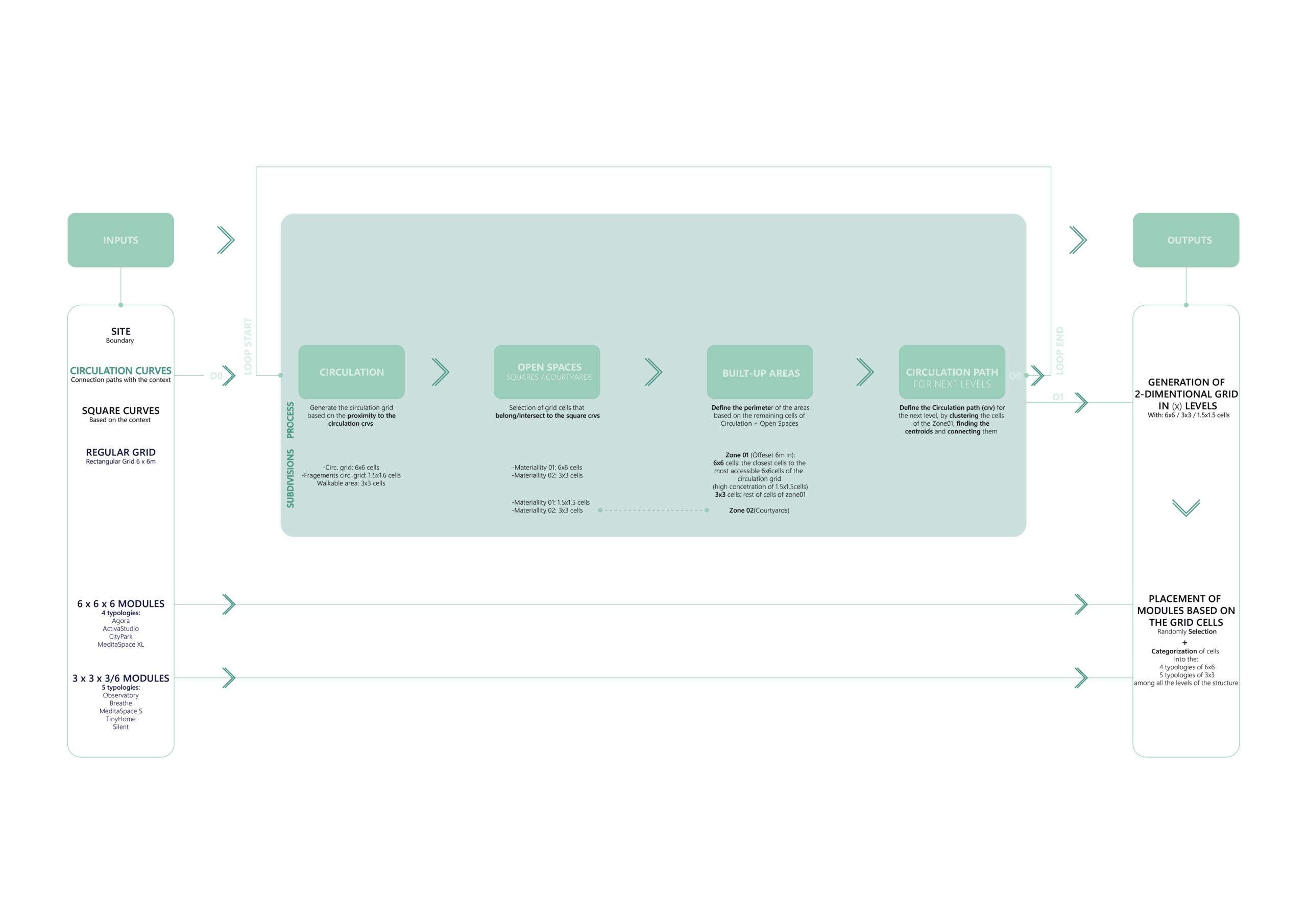
The computational process is based on using a main Loop to distribute different kinds of module per each level. More specifically, the process for the first level is: Circulation curves define the units of movement including cells (1,5 x 1,5m) for walk , outdoor lounge spaces and garden areas. After circulation paths are completed, we select areas that won’t be affected by the algorithm since those are critical open spaces for the project. The cells that are not occupied either by the circulation cells or the main open spaces are grouped in clusters which will be used in the next steps of the algorithm as built areas. The cells included in the clusters are divided by the ones that are located in the perimeter of the cluster and the rest which are located in the inner part of the clusters. Among all the cells of the perimeter, we select the ones closer to the circulation cells and define them as built spaces (6x6m). The remaining cells of the perimeter are getting filled with smaller cells(3x3m). The inner regions within the clusters are also subdivided into smaller cells (3x3m & 6x6m.)
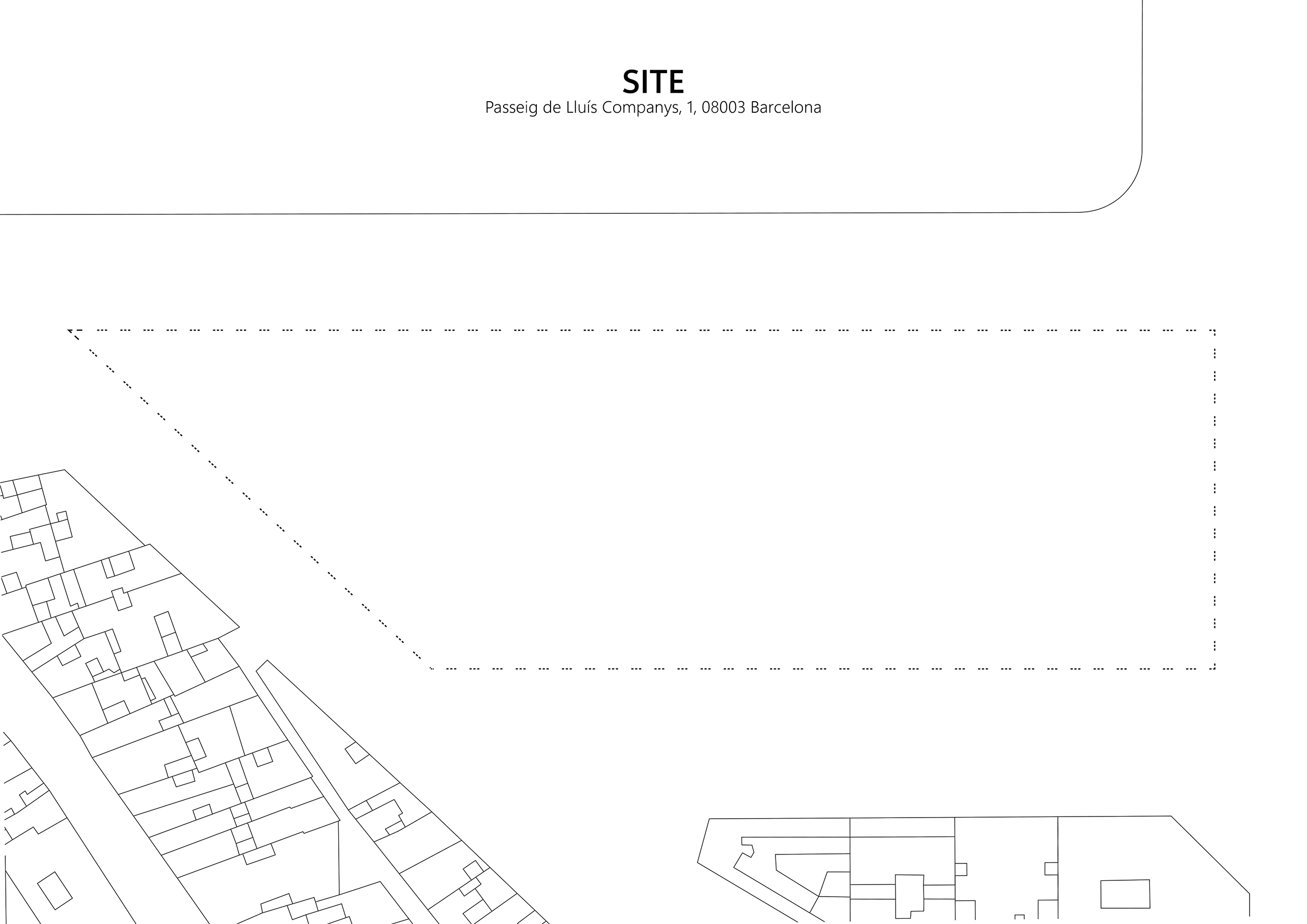
The process of the first level is completed with two main outputs that will be used for the second loop. The first output is a group of different kinds of cells categorized as indicated above, while the second output is a new circulation curve, connecting the centers of the clusters of its lower level. Depending on the desirable number of floors, the following loops will repeat the same process by using the new circulation line produced in the initial process of the script.

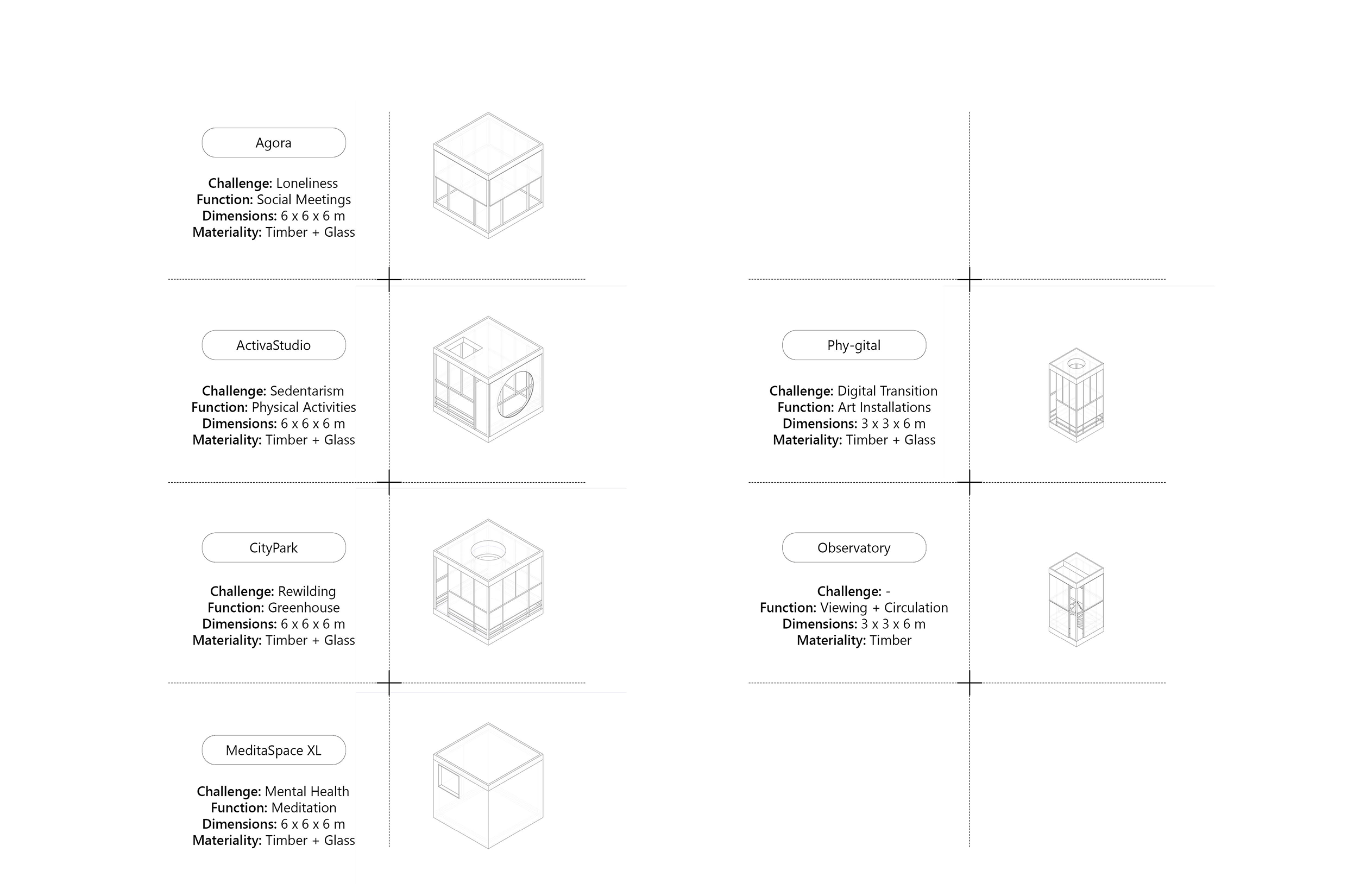
According to the proposed urban challenges the project aims to tackle, a catalogue of modules varying in function, size and materiality is deployed to effectively hold representative activities that either allow citizens practice, raise awareness, and promote social encounters, among others.

Following the overall strategy, the modules promote principles of durability, modularity and flexible (dis)assembly. The construction methods are two: On the one hand, a light system consisting of timber framing, that serves as structure for various types of cladding panels. On the other hand, a mass timber system, to represent introversion and robustness.
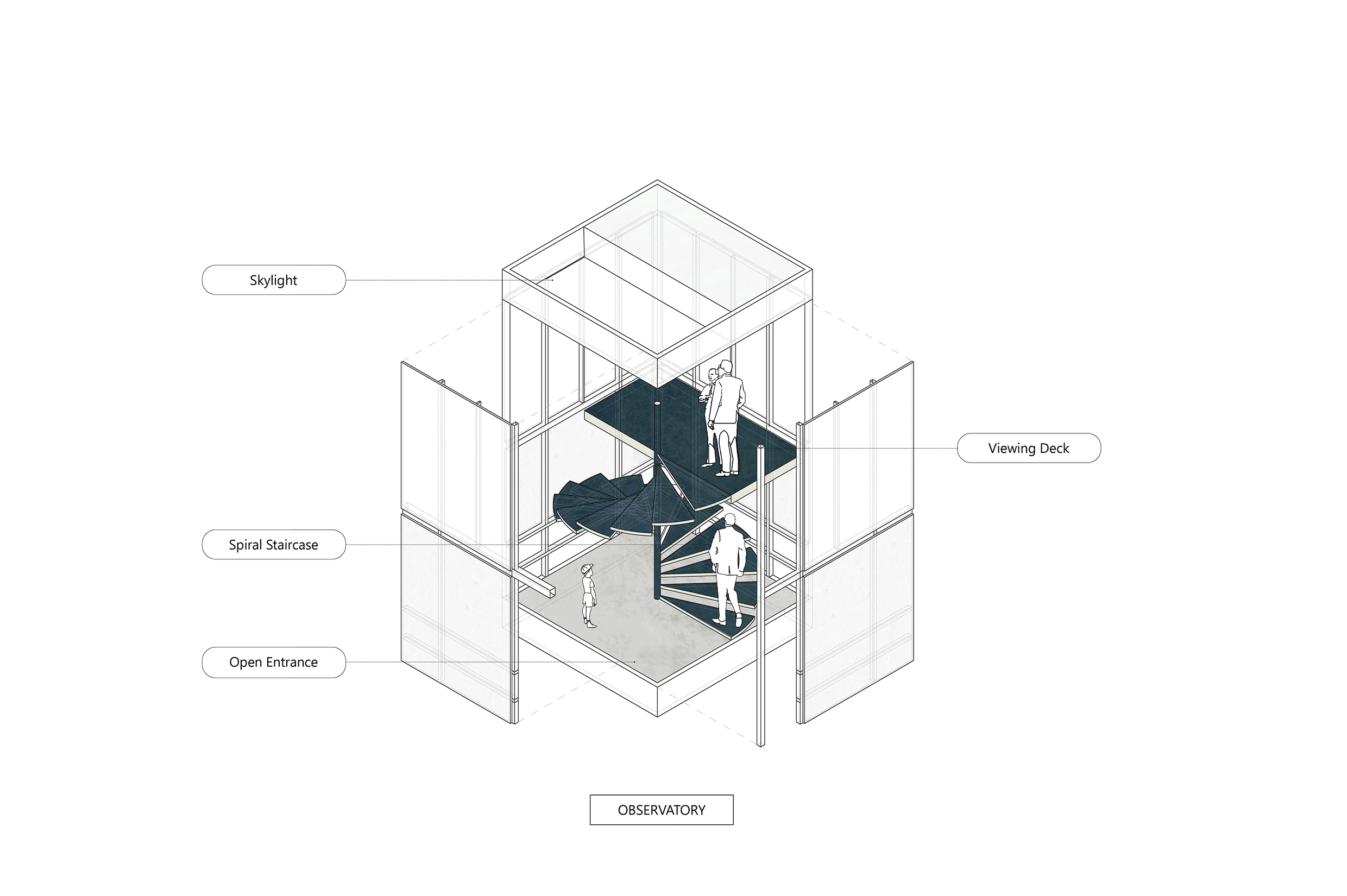
Each module hosts a specific program, according to the materiality and size of it. Agora acts as a shaded plaza for open, spontaneous, and creative gatherings. The Observatory serves both as vertical communication core and as viewing deck. The MeditaSpace S is designed to enjoy a time of self-introversion and isolation.

